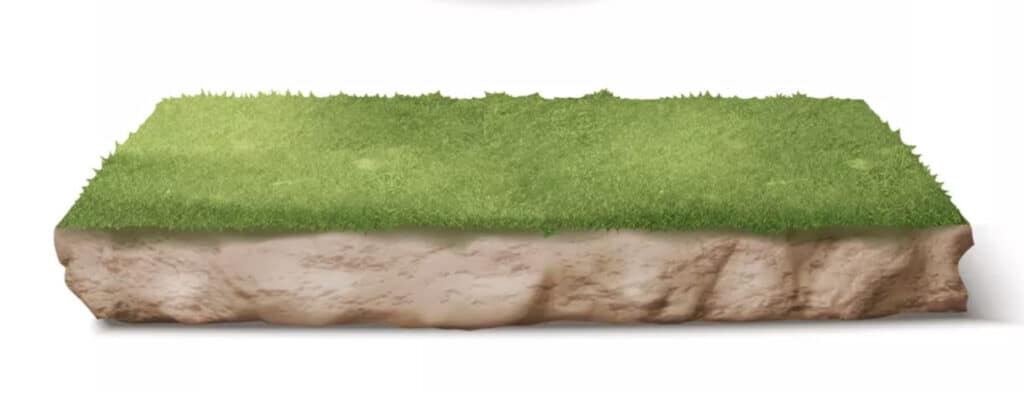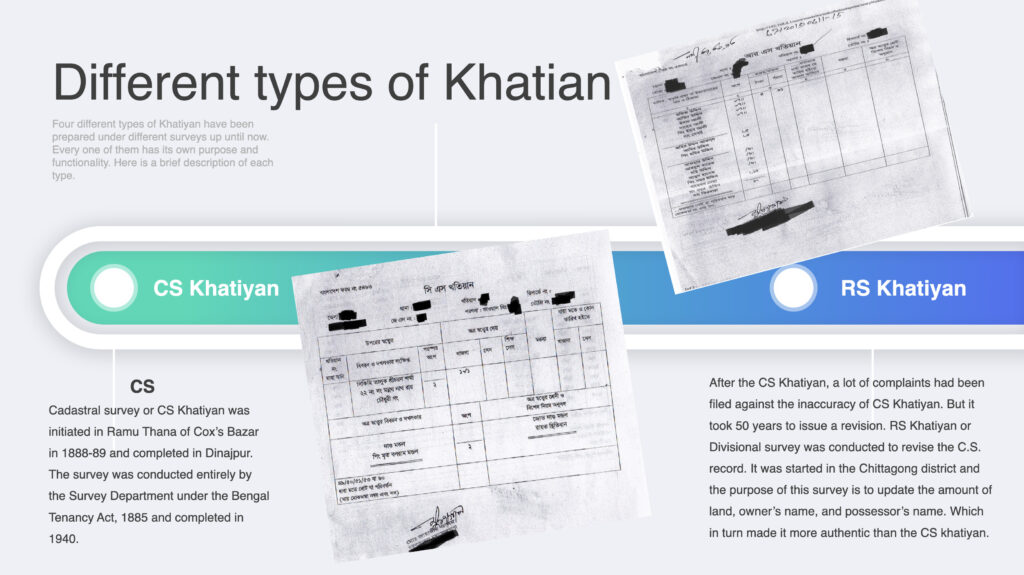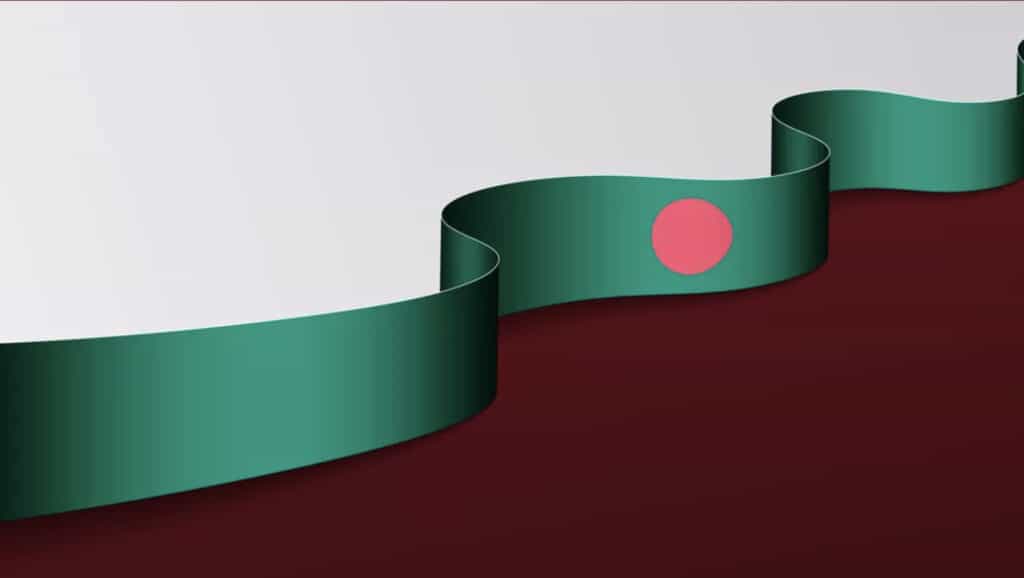Khatian correction Suit in Bangladesh
Land ownership and property rights hold immense significance in any society, providing stability and security to individuals and communities.
In Bangladesh, where land is a precious resource and a crucial element of livelihoods, the accuracy of land records is of paramount importance. A Khatian, a document that records land ownership details, serves as the cornerstone for property transactions and legal disputes.

However, discrepancies or errors in Khatians can lead to confusion, disputes, and injustices. To address these issues, the legal system in Bangladesh provides the avenue of a Khatian correction suit. In this article, we delve into the intricacies of Khatian correction suits, highlighting their significance, procedures, and challenges.
Understanding Khatian and Its Importance
In the context of land ownership, a Khatian is a vital document that establishes the legal identity of land parcels, their boundaries, and the respective owners. It serves as a comprehensive record of rights, tenures, and liabilities associated with land.
Accurate Khatians are essential for various purposes, including property transactions, inheritance, dispute resolution, and land development. When Khatians contain errors or inaccuracies, it can lead to misunderstandings, legal battles, and hinder socio-economic progress.


CONTENTS OF KHATIAN
Khatiyan determines a lot of critical factors. It does not determine the right to possession of the land, but it serves as supporting evidence for the Title Deed (another vital document for validating ownership). A Khatiyan, or Record of Rights, comprises the following information to that end:
- Khatian number;
- Mouza,Upazilla, District and J.L.No;
- Name, father’s name and address of the owner or owners;
- Plot (dhag) number;
- Portion of the owner or owners;
- Class and nature of the land;
- Amount of land development tax payable;
- Total amount of land (dhag wise) etc.
The Need for Khatian Correction Suits
Errors in Khatians can occur due to a variety of reasons, including typographical mistakes, inaccurate surveys, boundary disputes, and illegal land encroachments. These errors can result in wrongful dispossession of land, disputes among co-owners, and difficulties in obtaining loans or grants.
To address such issues and ensure equitable land ownership, the legal system in Bangladesh provides the option of filing a Khatian correction suit.
Initiating a Khatian Correction Suit
A Khatian correction suit is a legal remedy available to individuals or parties seeking to rectify errors or inaccuracies in land records. The process involves several stages:
- Gathering Evidence: The plaintiff (the party initiating the suit) needs to collect substantial evidence that demonstrates the errors in the Khatian. This may involve land survey reports, affidavits from witnesses, historical documents, and any other relevant records.
- Filing the Suit: The plaintiff files a suit in the appropriate court, usually the relevant Subordinate Judge Court or Assistant Judge Court, within the jurisdiction where the land is located. The suit should include details of the errors, the proposed corrections, and the grounds for correction.
- Summons and Notice: Once the suit is filed, the court issues summons to the defendant(s), notifying them about the lawsuit and its nature. The defendants are given the opportunity to respond and present their side of the case.
- Evidence and Arguments: Both parties present their evidence and arguments before the court. The plaintiff must establish the existence of errors in the Khatian, while the defendant may counter with evidence supporting the accuracy of the document.
- Court’s Decision: After evaluating the evidence and hearing the arguments, the court decides whether the corrections requested by the plaintiff are justified. If the court deems the corrections necessary, it will issue an order directing the relevant authorities to make the necessary amendments to the Khatian.
Challenges and Considerations
Navigating a Khatian correction suit can be a complex and time-consuming process, involving legal intricacies and potential challenges:
- Evidence Collection: Gathering compelling evidence to substantiate errors in the Khatian is essential. This often requires thorough research, land surveys, and witness testimonies, which can be resource-intensive.
- Legal Expertise: Engaging legal counsel with expertise in property law is advisable to navigate the legal complexities and procedural requirements of the correction suit.
- Delays and Backlogs: The judicial system in Bangladesh, like many other countries, may experience delays and backlogs. This can prolong the duration of the suit, causing frustration and additional costs.
- Cooperation of Authorities: The cooperation of relevant land authorities and government agencies is crucial for implementing the corrections ordered by the court. Delays or reluctance on their part can hinder the effectiveness of the correction process.
- Boundary Disputes: If the errors in the Khatian are related to boundary disputes, resolving these disputes may require negotiations and consensus-building among the parties involved.

Khatian correction suits play a vital role in ensuring accurate land records, equitable land ownership, and the prevention of unjust dispossession. In a country like Bangladesh, where land-related conflicts can have far-reaching socio-economic implications, a robust and effective mechanism for correcting Khatian errors is essential. By understanding the process, challenges, and potential benefits of filing a Khatian correction suit, individuals and communities can take steps towards securing their land rights, resolving disputes, and contributing to a more just and prosperous society.
State Acquisition and Tenancy Act – SAT ACT
State Acquisition and Tenancy Act; which is specially created for resolving disputes originating from the final publication of the last revised record-of-rights prepared pursuant to Section 144 of the SAT Act.
On the basis of this research and a certain amount of experience with it, we have determined that a large number of cases have been lodged before it without the Tribunal’s knowledge.
The provisions of I 45A(1) make it plain that the Land Survey Tribunal is to be established to correct only the most recently revised record of rights, i.e. only the BS, BRS, or RS record. Therefore, such Tribunals will only have the authority to rectify the final BRS record; they will not be able to view information beyond the final record.
In this regard, Section 145A(4) of the SAT Act may be quoted: “The Land Survey Tribunal shall have no jurisdiction over any action other than those arising from the final publication of the last revised record of rights prepared pursuant to Section 144.”
This subsection (4) of section 145A states that the Tribunal shall only have jurisdiction over cases arising from the final publication of the “last revised record of rights,” i.e. the BS/ BRS/RS Khatian. Therefore, in the Land Survey Tribunal, only the most recent record-of-rights can be the subject of a lawsuit.
Entering in the recent record-of-rights:
Additionally, we are aware that the last (BRS) record cannot be rectified unless the SA record in the plaintiff’s or his predecessors’ names is corrected. Referencing “Without correcting the SA Khatian and RS Khatian as prepared for the case lands in accordance with law previously, the petitioner cannot get its name entered in the recent record-of-rights prepared during the Mohanagar Survey allegedly solely on the basis of CS Khatian” is permissible in this regard.
The petitioner had no standing to dispute the draft Mohanagar Survey Khatian prepared in the names of the respective writ petitioners, at least after the publication of the gazette notifications dated 24 March 1952 and 29 February 1956″, 15 BLC (AD) 115.

Reading this section 145A from this perspective, it is also presumed that the Land Survey Tribunal lacks the authority to correct the SA record; in other words, if a dispute in a lawsuit involves the incorrectness of the former SA record, the Land Survey Tribunal shall have jurisdiction to hear the lawsuit under section 110.
The term ‘arising out of’ as used in this subsection (4) does not include any action in which the plaint alleges that the last BS record was incorrectly published, thereby casting a cloud over the plaintiff’s title.
These terms should only refer to those that the Tribunal may grant pursuant to subsection (8) of section 145A of the SAT Act, i.e. only the correction of the record of rights.
Consequently, suits which, in their petition, seek a declaration that the most recent BS record is incorrect and also seek correction of the said BS record in a specified manner shall be deemed to arise from the most recent record of rights.
Though a suit in the Land Survey Tribunal is not a writ petition, as we have already observed, this is clearly a summary proceeding.
Land Survey Tribunal and summary proceedings
As a result, we presume that the above-mentioned writ principle that “when a dispute involves a complicated question of title and possession between the parties, then this dispute cannot be determined in Land Survey Tribunal in a summary proceeding; rather, the matter should be determined by a civil court in a properly formed suit for establishment of title of the parties” will provide support for our position.
We find support for the following viewpoint: – A right of easement to be confirmed in a proceeding under section 143A is completely outside the scope of investigation under this section, 31 DLR 421. The Court below should exercise caution in encouraging adjudication of disputed title and possession under the auspices of a procedure under Section 143A. A fully effective adjudication of title and possession must be left open for a properly organized suit, 31 DLR 42 J.
In this connection, Section 54 of the SAT Act makes it explicit that where the parties disagree over title to and possession of the suit lands, the Land Survey Tribunals have no authority to settle the disagreement. Only the Civil Court has the authority to proclaim title to and possession of the suit lands.
This point of view is supported by decisions published in 10 DLR 527, 53 DLN 506, and BSCD Vol. Vp. 269. The suit contemplated in Section 30 of the SAT Act is not a suit for the determination of a question of title and possession.
The bar of jurisdiction created by Section 30(2) of the SAT Act is unrelated to the question of title and possession to any land, which is expressly dealt for in Section 54 of the Act, 10 DLR 527.
| FAQs about Khatian Correction Suits in Bangladesh | |
|---|---|
| What is a Khatian? | A Khatian is a document that records land ownership details, boundaries, and related information. It serves as a vital record for property transactions and legal purposes in Bangladesh. |
| Why might I need to file a Khatian correction suit? | You might need to file a Khatian correction suit if there are errors, inaccuracies, or disputes related to land ownership or boundaries in the Khatian document. |
| Where do I file a Khatian correction suit? | Khatian correction suits are usually filed in the relevant Subordinate Judge Court or Assistant Judge Court within the jurisdiction where the land is located. |
| What evidence do I need to gather for the suit? | You need to gather evidence that substantiates the errors or inaccuracies in the Khatian. This may include land survey reports, affidavits, historical documents, and other relevant records. |
| Do I need a lawyer to file a Khatian correction suit? | While not mandatory, it’s advisable to engage a lawyer with expertise in property law to navigate the legal complexities and ensure a strong case presentation. |
| What is the process of filing a Khatian correction suit? | The process involves filing the suit, serving summons and notice to the defendant(s), presenting evidence and arguments, and awaiting the court’s decision on the corrections requested. |
| What if the defendants dispute the corrections? | If the defendants dispute the corrections, they can present their evidence and arguments in court. The court will evaluate both sides before making a decision. |
| How long does the process typically take? | The duration of a Khatian correction suit can vary. Delays in the judicial system, evidence collection, and other factors may impact the timeline. |
| What happens if the court approves the corrections? | If the court approves the corrections, it will issue an order directing the relevant authorities to make the necessary amendments to the Khatian document. |
| Can a Khatian correction suit resolve boundary disputes? | Yes, a Khatian correction suit can be used to address boundary disputes by presenting evidence and seeking a court-mandated resolution. |
| What challenges might I face during the process? | Challenges include evidence collection, potential delays in the legal system, cooperation from authorities, and negotiating with other parties involved. |
| Can I appeal the court’s decision if I’m dissatisfied? | Yes, you have the right to appeal a court decision if you are dissatisfied with the outcome of the Khatian correction suit. |
| How can I ensure accurate land records in the future? | Regularly monitoring and verifying your Khatian, updating information as needed, and maintaining accurate land records can help prevent future disputes. |
Contact the best land lawyers and property law firm in Bangladesh:
GLOBAL OFFICES:
DHAKA: House 410, ROAD 29, Mohakhali DOHS
DUBAI: Rolex Building, L-12 Sheikh Zayed Road
LONDON: 1156, St Giles Avenue, 330 High Holborn, London, WC1V 7QH
Email Addresses:
info@trfirm.com
info@tahmidur.com
info@tahmidurrahman.com
24/7 Contact Numbers, Even During Holidays:
+8801708000660
+8801847220062
+8801708080817
